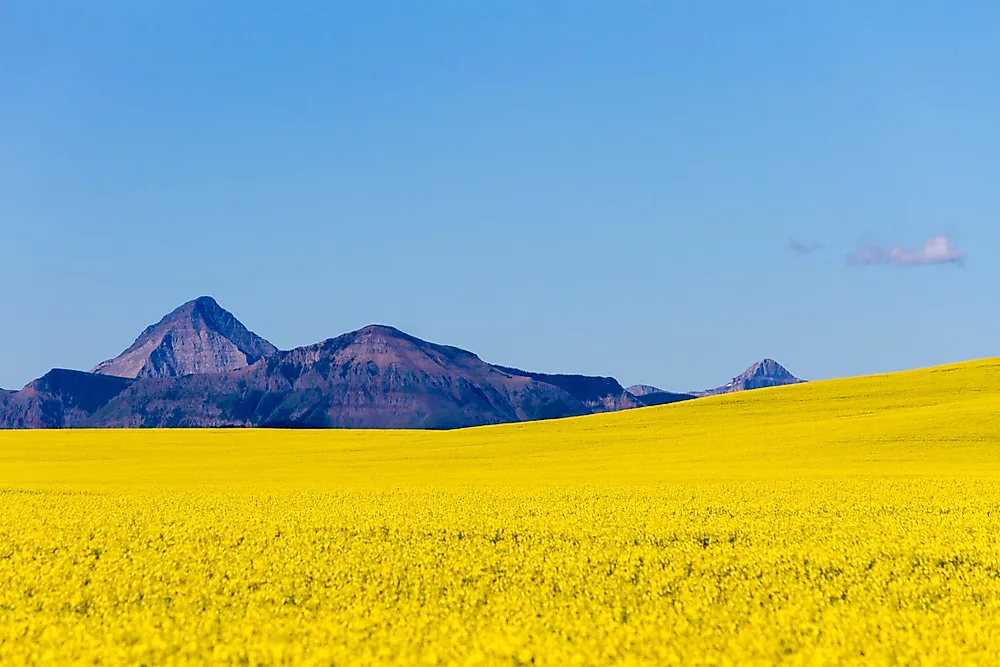The World's Top Rapeseed Producing Countries

Rapeseed is a bright-yellow flowering plant which is a member of the cabbage family botanically referred to as the Brassicacea. The plant height ranges from three to five feet with a deep taproot and a near-surface fibrous root system. The plant also typically has four petals. The crop is kept mainly for its seeds which produce 40% oil and high-level protein for animal feed. Since 1991, the production of the crop particularly in the European Union has shifted to rapeseed 00 varieties which have low content of erucic acid.
Uses Of Rapeseed
The crop is mainly kept for its seed. Its high content of oil makes it preferred over soya beans whose seed has just 18% of oil in some areas. However, one major challenge to its production is the limited market for the products that remain after the oil has been processed from the seeds. The nature of the crop also provides good soil cover which reduces the effect of soil erosion, especially during the winter. It also proves essential for the purpose of forage being an annual crop. The huge amount of biomass that the crop produces enables the suppression of weeds on the ground where it is planted. This helps to eliminate or reduces the cost of weeding the farms on the owners. Other benefits on the soil include the improvement on the soil tilt by the support of the root system. Livestock can also graze the plants during the fall growth periods.
Benefits Of Rapeseed
Industrial rapeseed has a variety of uses for its oil. The oil is mainly used for non-edible purposes such as lubrication, hydraulic fluids and plastics. The high-erucic-acid in rapeseed is primarily used in environments where high heat stability is required.
Cultivation And Production Of Rapeseed
The environmental conditions required for the production of rapeseed is similar to that of the winter canola. They perform well in well-drained soils with an alkaline PH ranging from 5-9. Total rapeseed production has been on the rise since 2007. The total acreage has also increased steadily since. The equipment required in its production includes a tractor, sprayer, broadcast seeder, combine harvester and wagons for transportation like other small grain crops. The crop needs to be sprayed while on the farm for weed management. The need for fertilizer depends on the potential of the soil measured by rainfall prospects and soil type.
Top Rapeseed Producing Countries
In 2017, Canada, China, India, France, and Australia were the top five countries in rapeseed production. Canada alone produced more than 2 million tons of rapeseed.
Value Of The Crop
There are increasingly many more countries taking up the production of the crop over soya beans. One major hindrance to its adoption is the limited use of seed meals remaining after the oil has been extracted. The glucosinolates present limit its use for animal feed due to the adverse negative impacts.
The World's Top Rapeseed Producing Countries
| Rank | Country | Production (Tonnes) |
|---|---|---|
| 1 | Canada | 21,328,000 |
| 2 | China | 13,274,010 |
| 3 | India | 7,917,000 |
| 4 | France | 5,200,000 |
| 5 | Australia | 4,313,230 |
| 6 | Germany | 4,275,600 |
| 7 | Poland | 2,697,265 |
| 8 | Ukraine | 2,194,790 |
| 9 | United Kingdom | 2,167,000 |
| 10 | Romania | 1,673,330 |











